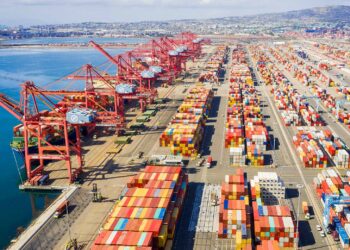Crude oil prices rallied higher at Tuesday’s trading session in London.
The price gains are coming on reports that the world’s largest economy citizens would get more pandemic aid payments coupled with news that a final Brexit deal is set to stabilize trade between Europe and the UK.
READ: Could we ever see $100 oil again?
What you should know
- At the time of writing this report, Brent crude futures gained 0.5%, to $51.09 a barrel, and U.S. West Texas Intermediate (WTI) crude futures also rallied by 0.5%, to $47.85 a barrel.
- Oil prices are rising along with leading Asian shares as Japanese stocks hit a 30-year high, on rising investor risk appetite on the bias that the U.S. House of Representatives voted to raise pandemic relief payments to $2,000 from $600.
- The United States Senate still needs to vote on the measure.
READ: Nigeria is the 14th largest producer of tomatoes in the world, second in Africa – NIHORT
What they are saying
Stephen Innes, Chief Global Market Strategist at Axi, in a note to Nairametrics, gave detailed insights on the parabolics keeping oil bulls in the prevailing price action of crude oil market amid an era of record quantitative programs by the world’s largest economy.
Oil markets feel very rangy into the New Year but should find support today from broader risk markets as stocks are soaring on the prospects of larger stimulus checks.
READ: Vaccine, Backwardation and OPEC+: Hope for oil?
- “However, for oil markets, gains could be limited due to the new COVID-19 variant and OPEC meeting overhangs. After stalling out at Brent $52 as the stimulus relief rally gave way to the new variant virus reality which might pose significantly more downside risk due to mobility restrictions than current demand tailwinds for oil which sees January demand is currently on shaky footings.
- “Oil prices then fell after Russian Deputy Prime Minister Alexander Novak hinted that should oil demand recover next year faster than currently expected, member states could adjust the terms of the current OPEC + production agreement.
- “After watering down the original January production plan to 500,000 bpd from 2 million bpd, the surging oil prices suggest smaller states would be eager to bring more barrels back to the market.”
READ: ExxonMobil issues force majeure on Qua Iboe Terminal
What to expect
The major question many oil traders are pondering on is how quickly and by in what capacity will OPEC+ turn on the taps?
- But one certain thing is that OPEC+ needs to ensure its production capacity meets demand rather than leave it for US shale, suggesting all production decisions will be guided by price.



















